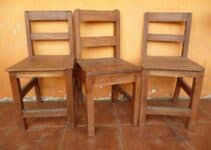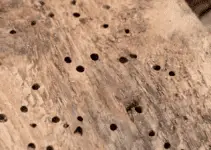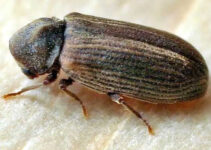If you suspect a woodworm infestation within the sanctity of your own home, understanding the optimal season for woodworm treatment is vital. The creaking floorboards and antique furniture may carry more than just history; they might be harboring these clandestine pests, threatening to undermine the integrity of your wooden treasures. As these intruders operate on a specific lifecycle, there’s a window of opportunity where your intervention can be most effective.
Typically, you should aim to treat woodworm between late spring and early autumn. This period aligns with the emergence of adult beetles, which signifies the time they hatch and are the most vulnerable. It’s during these months that taking action to eradicate the larvae can thwart an impending bloom of woodworm, ensuring your cherished wooden items remain intact and cherished for years to come.
Don’t be duped by the diminutive size of these pests; their impact on wood is anything but small. Promptly treating woodworm at the first sign of infestation – like the appearance of small round holes and piles of gritty bore-dust – can save you from the heartache of extensive damage in the long term. Letting the season dictate your response to a woodworm infestation goes a long way towards preserving the beauty and structural soundness of your wooden features.
Understanding Woodworm Infestation and its Lifecycle
When you come across the telltale signs of woodworm in your furniture or structural timbers, it’s crucial to assess whether you’re dealing with an active woodworm infestation. Recognizing these signs early on can prevent extensive damage to your valuable woodwork. The lifecycle of these wood boring insects is key to understanding how and when to tackle them effectively.
Identifying Active Woodworm Infestations
An active infestation is often betrayed by the presence of fresh exit holes and frass, a fine powdery dust left by the larvae of wood boring insects as they eat their way through wood. Unlike the more rounded holes of past infestations, these will have sharp edges. Also, you might see the common furniture beetle itself, or evidence of its presence, during the active months.
Stages of Woodworm Development
The woodworm life cycle starts when an adult beetle lays its eggs within the crevices and cracks of wood. After hatching, the larvae burrow deep into the core, feeding and growing until they are ready to pupate and eventually emerge as adult beetles. This cycle can take anywhere from two to five years depending on conditions such as temperature and humidity, which affect the larvae’s development.
Common Wood Boring Beetles and Their Impact
Among the species of wood boring insects, the common furniture beetle is the most prevalent in the UK. However, several other species also contribute to woodworm infestations. These insects not only compromise the structural integrity of timber but also decrease its value and aesthetic appeal. Understanding the severity and the type of beetle involved is essential for proper treatment.
| Beetle Species | Appearance | Preferred Timber | Flight Season |
|---|---|---|---|
| Common Furniture Beetle | Brown with an elongated body | Softwoods and hardwoods | May to September |
| Deathwatch Beetle | Dark brown with a squat body | Hardwoods, especially oak | April to June |
| House Longhorn Beetle | Black or brown with long antennae | Softwoods, commonly in roofing | July to October |
| Powderpost Beetle | Reddish-brown and smaller than others | Hardwoods with large pores | April to July |
Effective Woodworm Treatment Techniques
When combatting a woodworm infestation, the application of the appropriate treatments is not just an option—it’s an imperative step in safeguarding the longevity of your wood structures. Your approach to this must be methodical, ensuring that treatments like woodworm killer and wood preservative are not merely applied on the surface but penetrate deeply into the wood to reach the heart of the infestation. Utilizing trusted products containing active ingredients such as Permethrin can make a significant difference in the effectiveness of your treatment.
The Right Way to Apply Woodworm Treatments
Successful eradication begins with preparation; stripping back any finish on your timbers is essential before application. This exposes the raw wood, allowing for the woodworm killer to be absorbed thoroughly. When treating, it is pertinent to apply the product to all wood surfaces, irrespective of visible signs of infestation, to achieve a comprehensive treatment. This eliminates any chance for woodworm lurking unseen to continue their damage.
Safety Precautions During Woodworm Treatment
Safety should be your top priority. Always wear protective gear, including gloves and a mask, to avoid inhalation or skin contact with the chemicals. Work in a well-ventilated area and follow all instructions specified by the woodworm treatment product’s manufacturer. Keep pets and children away from the treated areas until completely dry and safe for exposure.
Choosing the Appropriate Woodworm Treatment Product
Selecting the correct product often hinges on the severity and location of the infestation. For lighter infestations, products such as Cuprinol Woodworm Killer (WB) may suffice. In contrast, more pervasive or severe cases might necessitate a robust formulation like Barrettine Premier Woodworm Killer to penetrate deeply and offer both a curative and preventative solution against future woodworm challenges.



